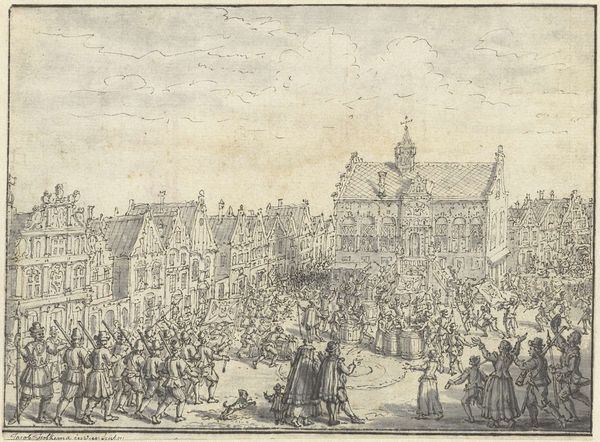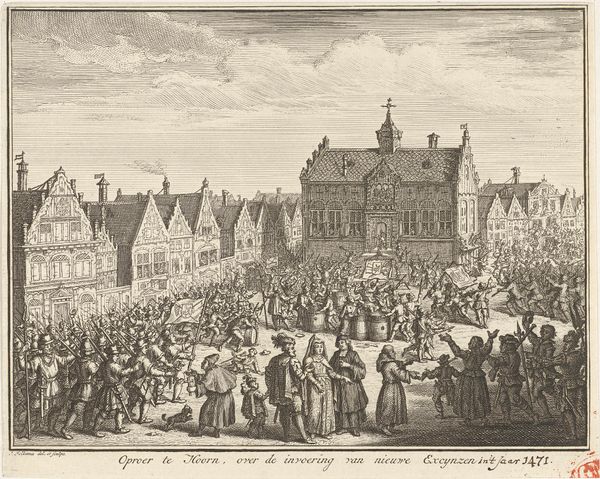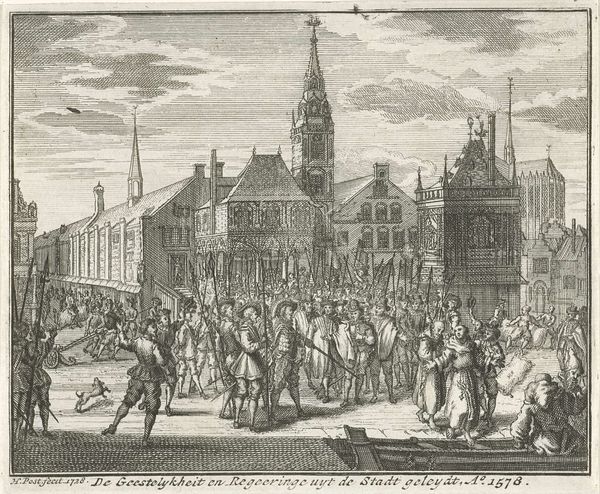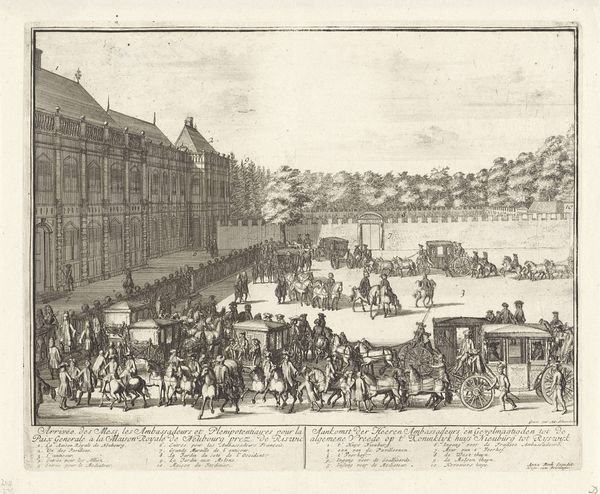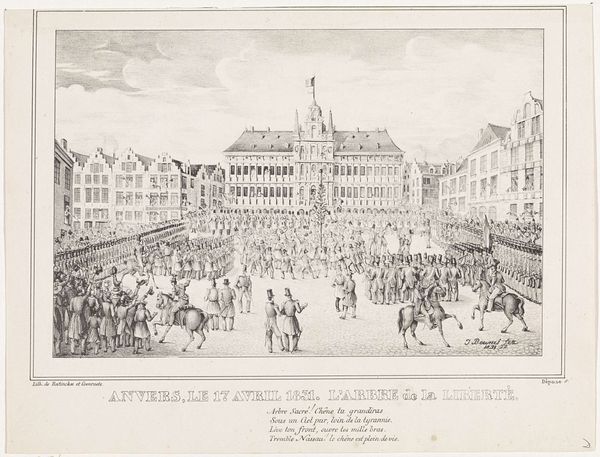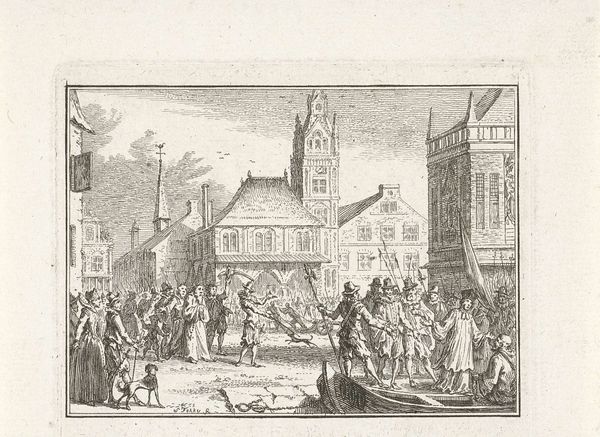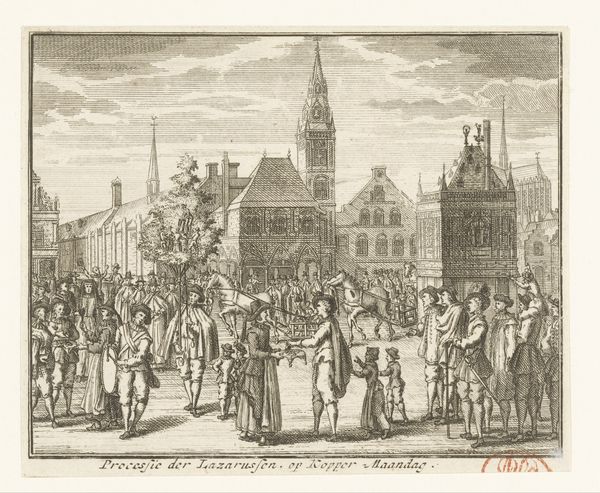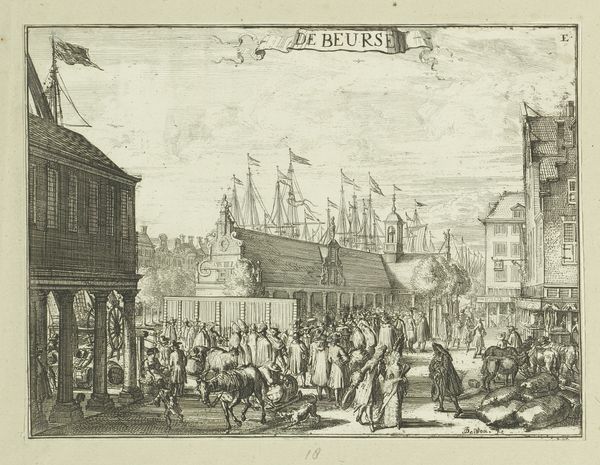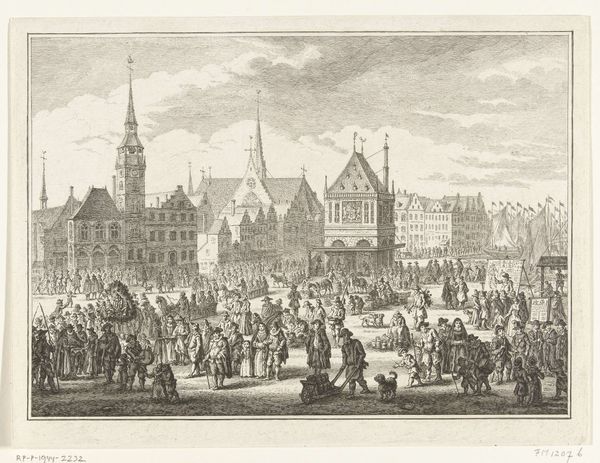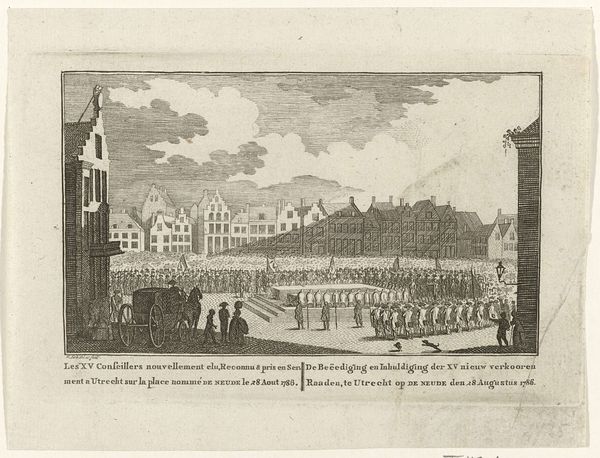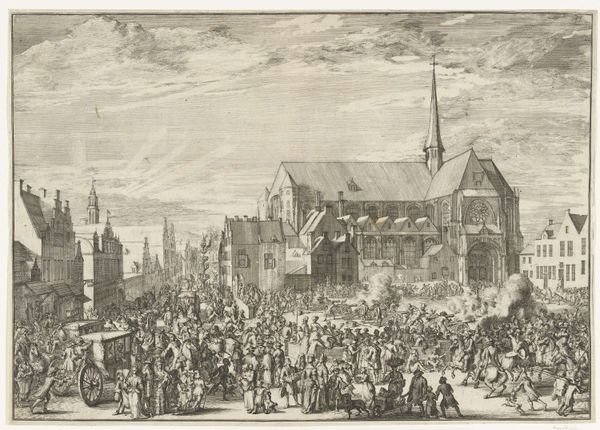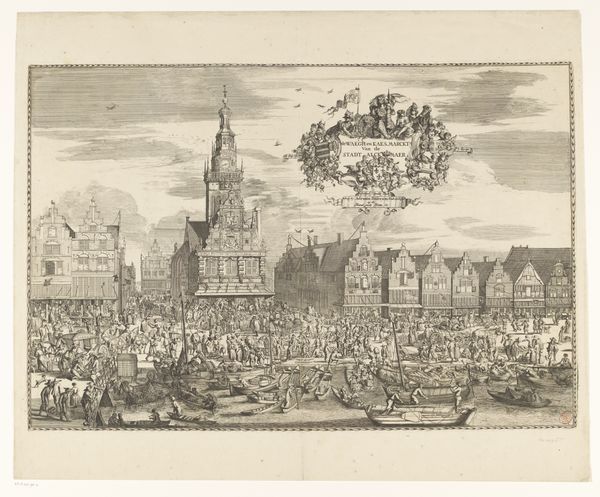
print, etching, engraving
#
baroque
# print
#
pen sketch
#
etching
#
cityscape
#
history-painting
#
engraving
Dimensions: height 419 mm, width 550 mm
Copyright: Rijks Museum: Open Domain
This is Romeyn de Hooghe’s 1686 etching of the festivities for Leopold I’s arrival in Brussels. This print serves as a visual record of the elaborate public spectacle orchestrated to welcome the Holy Roman Emperor to the city. De Hooghe’s detailed rendering invites us to consider the politics of imagery in 17th-century Brussels. As a key city within the Spanish Netherlands, Brussels was keen to express its loyalty to the Habsburg monarchy amidst complex political landscapes. The festivities, meticulously documented here, reflect the social conditions and economic structures of the time, emphasizing Brussels' allegiance and projecting an image of prosperity and stability. The institutional history of the city, marked by its relationship with the Habsburgs, is central to understanding the print's significance. By consulting period documents such as city records, personal diaries, and other visual representations of similar events, we can understand the complex interplay between art, power, and society.
Comments
No comments
Be the first to comment and join the conversation on the ultimate creative platform.
